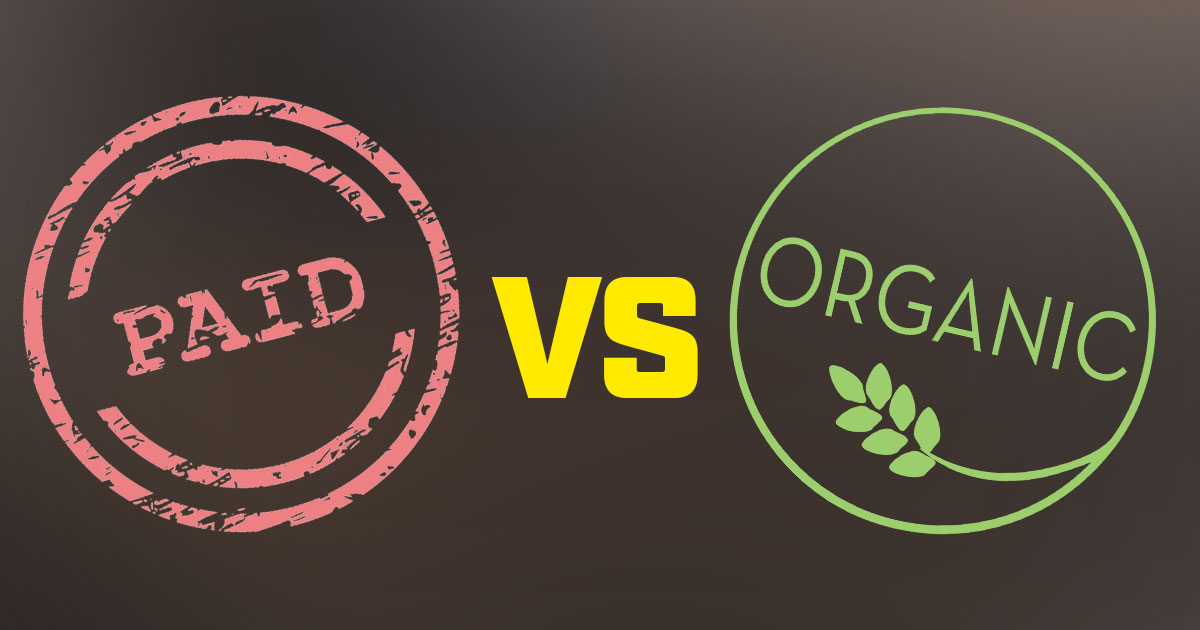Hello and welcome to Brian Kelley’s second post as a BizLab fellow. This week’s topic is organic vs paid posts on social media.
Every company wants to grow their consumer base, but some are unsure of how to successfully create growth. This is especially true when it comes to growing a social media following. In this blog post, I will be discussing the differences between organic and paid social media, as well as the experiences I have had with each.
Organic posts are always free. In creating an organic post, you use the basic tools provided to you by Facebook, Twitter, or Instagram. With an organic post, the best way you can develop your community is by sharing information relevant to your product/mission and sharing it in a way that is visually or verbally stimulating to the audience.
In a paid post, the person who wants to advertise the message will pay Facebook, Twitter, or Instagram to share their post with people who fit into a certain demographic. Paid posts work differently depending on which social media platform you are trying to use.
Paid Posts on Facebook
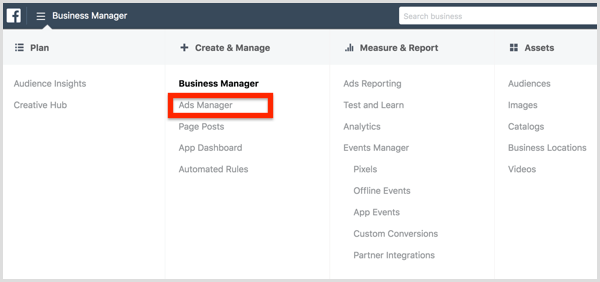
Facebook offers a large array of options when it comes to advertising. You can pay for an ad or boost an existing post. A boosted post is aimed simply at clicks and general engagement, while an advertisement offers several more-sophisticated objectives to choose from. These objectives are broken down into three different categories: awareness, consideration, and conversion. With an “awareness” ad, your objectives would fall under creating brand awareness and reaching a larger number of people. Traffic and engagement would fall under the “consideration” category. Lastly, a “conversion” ad aims to create sales and store visits.
A boosted post will have a different outcome than a standard Facebook ad. Choosing an ad instead of a boosted post will be a be better for most companies, as a boosted post will only increase general site engagement rather than generating sales or collecting email addresses. Additionally, a boosted post will only last for a maximum of seven days. If your goals are more specific than simple engagement, like generating store traffic, conversions, and leads, a boosted post will not be as effective as an ad.
Paid Posts on Instagram
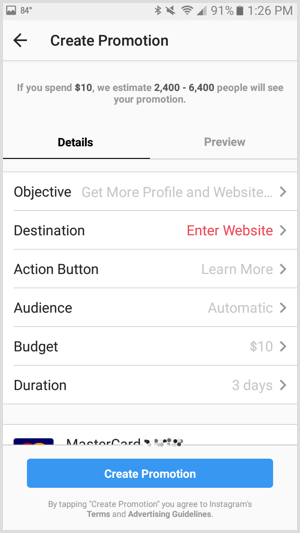
Instagram was purchased by Facebook in April of 2012, so the two platforms utilize the same ad management program. However, Instagram users are typically a much younger demographic, with a majority of users being between the ages of 15-29.
Like Facebook, you can pay for two different formats of instagram advertising known as “promoted” or “sponsored” posts. A promoted post on Instagram will operate similarly to a boosted post on Facebook, as even though it is easier to put out, you will only be reaching a very narrow group of people. A sponsored post will require the user to utilize Facebook’s ad manager, but you will be able to select objectives, demographics, budgets, and a “run time” for your ad. Having the ability to choose these options will likely result in a more successful ad campaign.
With Instagram advertising, advertisers are able to reach a large number of people and create brand awareness. Advertisers are more able to customize their advertisements on Instagram because you have more goal-oriented and demographic options available to you. However, in order to properly advertise on Instagram, you must utilize Facebook to access the ad manager. Advertising on Instagram is a great way to reach the age 15-29 demographic, but if you are aiming for a more mature audience, a Facebook campaign may be more effective.
Paid Posts on Twitter
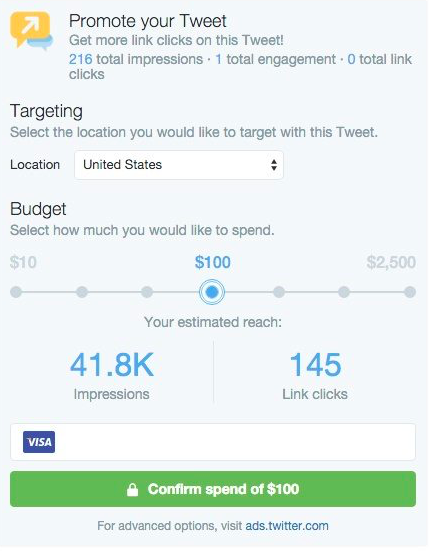
On Twitter, paid posts are referred to as “sponsored content”. You can choose a particular tweet from your account that you’d like to promote. You set the location and the budget for your post and Twitter optimizes the message based on your budget and the demographic information of your account.
Some of the upsides to advertising on Twitter are that you can drive traffic to your Twitter page and website and that Twitter utilizes a very cost effective method of “price per click”. The issue with promoting on Twitter is that it can be difficult for small accounts. Promoted tweets disappear if their engagement rate is too low. Additionally, Twitter does not allow you to choose a goal for the campaign, which could impact your personal success rate for the paid tweet.
BizLab’s Experiences and Data
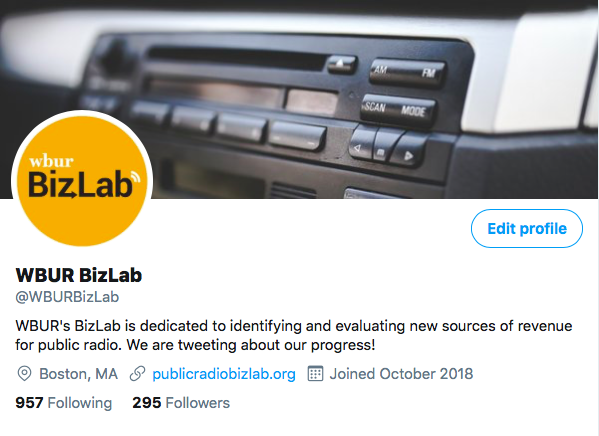
During my time at BizLab, I have used only organic posts for our Twitter account. Our number of followers is up by almost 25% and our number of impressions has greatly increased.
Additionally, BizLab team members Ted Fuller and Matt Aufiero ran an affiliate marketing project on Facebook this summer and were able to share some of their data with me. Hubspot, is a developer and marketer of software products for inbound marketing and sales. They reported that the average CPM or “cost per 1K impressions” was approximately $7.00. The affiliate marketing project operated by BizLab this summer had a CPM of $10.74. This is a high CPM compared to industry standards, but the overage was caused by us targeting very specific audiences. Hubspot also reported that the average CTR or “click through rate” was .99%. The affiliate marketing project recorded a 2.87% CTR. This is a high click through rate for a Facebook ad, but it may be due to our specific audience or the quality of the products that were being advertised. Lastly, our median cost per landing page view for the affiliate marketing project was $0.56 (ranging as high as $4.29 and as low as $0.11). Unfortunately, Hubspot does not provide benchmark data on the median cost per landing page view. Ultimately, we were able to reach over 850,000 Facebook users, but only 111 users purchased a product that we had advertised.
One of our cohort stations, WDET, is experimenting with Instagram advertising. They have been reaching out to Detroit’s local businesses and partnering with them, which brings local businesses onto WDET’s Instagram page. Thus far, local businesses have been excited and willing to pay for the opportunity to have an ad posted on WDET’s Instagram page. WDET’s existing audience is loving the local content and click/engagement rates have been high.
If your goal is to increase or maintain general activity on your site, then boosting or promoting a post on Instagram or Facebook is the way to go. However, in most cases, paying for a full ad on any social media site will be the more effective method. By paying for an ad, you can select a specific goal for your campaign and you can highlight more demographic factors. While you’re posting ads, it is important to respond to comments so that users feel as though they are listened to and do not feel as though they are following a purely ad based account. Finding balance between organic posts, responding to potential customers and users, and selecting the proper method of promotion are vital to the success of a social media campaign.
